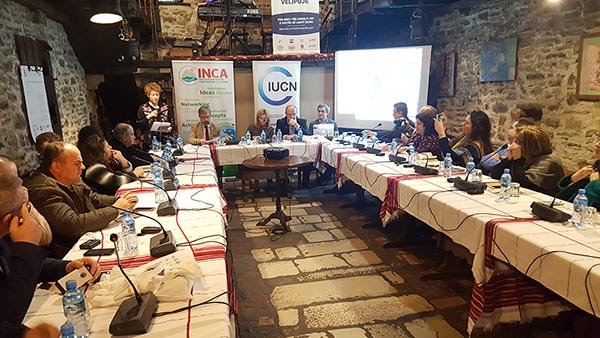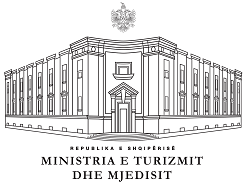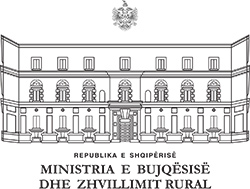

Established in 2015 is responsible for the administration and management of protected areas. The system covers 16 % of Albanian territory and comprises of national parks, several nature reserves and protected landscape areas. Management of PAs is achieved through its executing agencies, the 12 Regional Administrations for Protected Areas (RAPA). Each regional administration has one director and is structured in two sections: management and monitoring. The management section consists of a number of experts (2-4) responsible for addressing all management issues related to all the protected areas within the region. The monitoring section consists of a number of rangers assigned to different PA within that region. NAPA has 20 staff working in Tirana and 204 working in 12 RAPAs at the regional level.
It is the responsible institutions for the management of protected areas in Shkodra Region that includes Skadar Lake Nature Park, Buna River - Velipoja Protected Landscape, Thethi National Park, and all the Nature Monuments in the region. RAPA Shkodra currently employs 21 staff members, including one Director, one Chief of Monitoring Section, 5 Specialists and 14 Rangers. RAPA Shkodra is a main counterpart of the proposed project and shall be involved and / or closely consulted on all foreseen activities.

Established in 2014 and operates within the Ministry of Economic Development, Tourism, Trade and Entrepreneurship. The Agency is tasked to research and secure protection and promotion of Albanian coastline. It aims at coordinating efforts of local and central government, local communities and civil society in order to ensure sustainable development of coastal areas by applying good international practices in terms of integrated coastal management.

Through its Directorate of Biodiversity and Protected Areas under the General Directorate of Environmental Policies and Delivery Unit is responsible for the formulation of policies for protection of nature and development of strategic documents in this field. The cooperation includes other departments in the Ministry and reporting institutions such as: National Agency for Protected Areas, National Environment Agency; Regional Directorates of Forestry Service, State Inspectorate for Environment and Forestry. In the field of nature protection, the Ministry of Environment cooperates with the Ministry of Agriculture, Rural Development and Water Resources Administration regarding agricultural biodiversity; with the Ministry of Urban Development and Tourism regarding decision-making on land utilization; Ministry of Public Order to coordinate the work for the management of sport, recreational and tourism related activities; Ministry of State for Local Governance and Decentralization in the instances of local management of natural resources in the ownership of communes, and with General Directorate of Customs for international customs control for trading endangered species of wild flora and fauna.

It is central level institution responsible for formulation of policies and strategies in the field of agriculture, rural development, food safety and consumer protection, fisheries and aquaculture, forestry and inland waters administration. The extension service is organized and managed by MARDWA. Extension service provides information, advice and training to farmers and agri-business. Extension service regional sections are based at the 12 Regional Directorates of MARDWA, employing between 3-4 agricultural specialists (vegetable experts, fruit growing experts, livestock experts, and farm economists). Extension services operate 120 Agriculture Information Centres at local level.
Much of the BRVPL comprises settled land, including a large number of small farms. As such local residents have an important role to play in terms of management of the BRVPL and natural resources. This is realized through land use practices on individual properties, through local user associations, through local administration of municipal units and local branches of central level institutions. In practice local user associations remain relatively poorly developed and weak, such that the authorities of the Municipalities remain the dominant local stakeholders. Roles and responsibilities between local and state structures remain poorly defined, and municipal units typically lack the necessary resources to implement their mandate in terms of local management. Local level authorities and institutions include: Municipality of Shkodra and Municipality of Lezhe, Regional Council, Regional Development Office, Regional Environmental Agency, Regional Agriculture Directorate, District Forest Services Directorate, District Agriculture Directorate, District Education Directorate, District Health Directorate.
Non-governmental sector in the region is still poorly developed with an exception of INCA which has a long track record in implementing activities focusing on Skadar Lake and BRVPL and cooperating with project partners. INCA has established a network of civil society nature conservation organizations with the support of REC. In Albania the main partner is the Transboundary Shkodra/Skadar Lake Forum (TSLF) based in Shkodra. Other partners include the Preservation and Protection of Natural Environment Association in Shkodra (PPNEA-Shkoder), Rainbow Association, Association for Protection of Aquatic Wildlife of Albania (APAWA), the Aarhus Center in Shkodra, etc. The main role of this civil society organizations network will be the awareness and community mobilization. There is an array of over twenty other small NGOs operating in the region that may benefit from the project in terms of empowerment and built capacities.
Tourism sector is an important contributor to the local economy and there is a growing tourism industry based on the scenic combination of mountains, lake and sea, combined with the rich historical and cultural resources of the area, including a growing culinary reputation. The main tourism activity is summer beach tourism, with some 80,000 to 200,000 visitors per year. The bulk of the visitors comes from Kosovo, and typically stays for only a short period (from a few days to two weeks). This type of high volume – low spending tourism results in high pressures to local resources, for example in terms of demand for services and the management of wastes (solid waste and wastewater). It is also a key driver for the on-going uncontrolled urban development. The quality of tourism services is generally low and therefore there is a high potential both for improving tourism offer and increase income of local communities as well as make tourism development more sustainable and decrease pressure on natural resources and the environment. Tourism operators will be involved closely in the project activities in order to increase their awareness and jointly work out ways of changing current unsustainable practices.
Established in 2003 and recognized by Ministry of Agriculture as an organization responsible for management of fish resources in the watershed of Lake Skadar in Albania. It is comprised of 457 members in 201 fishing units. Based on the contractual arrangement with the Ministry, FMO provides fishing permits for all professional and recreational fishermen in Shkodra Lake, Koman and Vau Dejes reservoirs, Buna and Drin River and the lagoon of Velipoje. FMO is entitled for controls and law enforcement in the area, including combating illegal fishing practices and protection of reproduction grounds in the Skadar Lake. FMO has well established working relations with RAPA based on recently signed Memorandum of Understanding in the frame of IUCN lead, CEPF funded project.
Key group of resource users in BRVPL. Current fishing practices are considered to be unsustainable and to be reflected in diminishing fish catches. Fishermen in the sea face strong competition from larger vessels that launch from the nearby Shëngjin Port. Increasing levels of pollution pose a potential risk in terms of quality of fish for consumption. Ownership of land is highly fragmented and farm sizes are very small (mean size varies among municipal units from 1.0 to 1.9 ha). Big farms, defined as being larger than 10 ha in extent, or with more than 8 cattle or 150 sheep or goats, account for less than 5% of farms within the BRVPL. Access to credit is limited, hampering the ability of farmers to invest in machinery and irrigation equipment. Roughly half the cropping area is used for fodder production, with a wide variety of cereals, vegetables, fruits and olives being grown on the remainder. The livestock is dominated by cows (about 13,000 within the BRVPL), sheep (about 20,000) and goats (about 3,000), which provide meat, milk and cheese. Given the small size of farms, and thus production, access to markets is limited, and most production is used for self-consumption or for direct selling. Farmers and fisherman are to be involved in activities related to introduction and development of agri-environmental measures, climate smart agriculture, land management, branding and marketing of local products.

It is responsible for formal education programs in Albania, starting from elementary education to universities. MES operates regionally through the Regional Directorates of Education and the Education Offices in most of the districts. Any organisation developing and implementing educational activities involving schoolchildren shall inform the ministry and/or the Regional Education Directorate well in advance about the scope of the activity, schools to be involved and required level of involvement of children and / or teachers. The project partners shall coordinate activities related to education and awareness programmes with relevant bodies listed above.